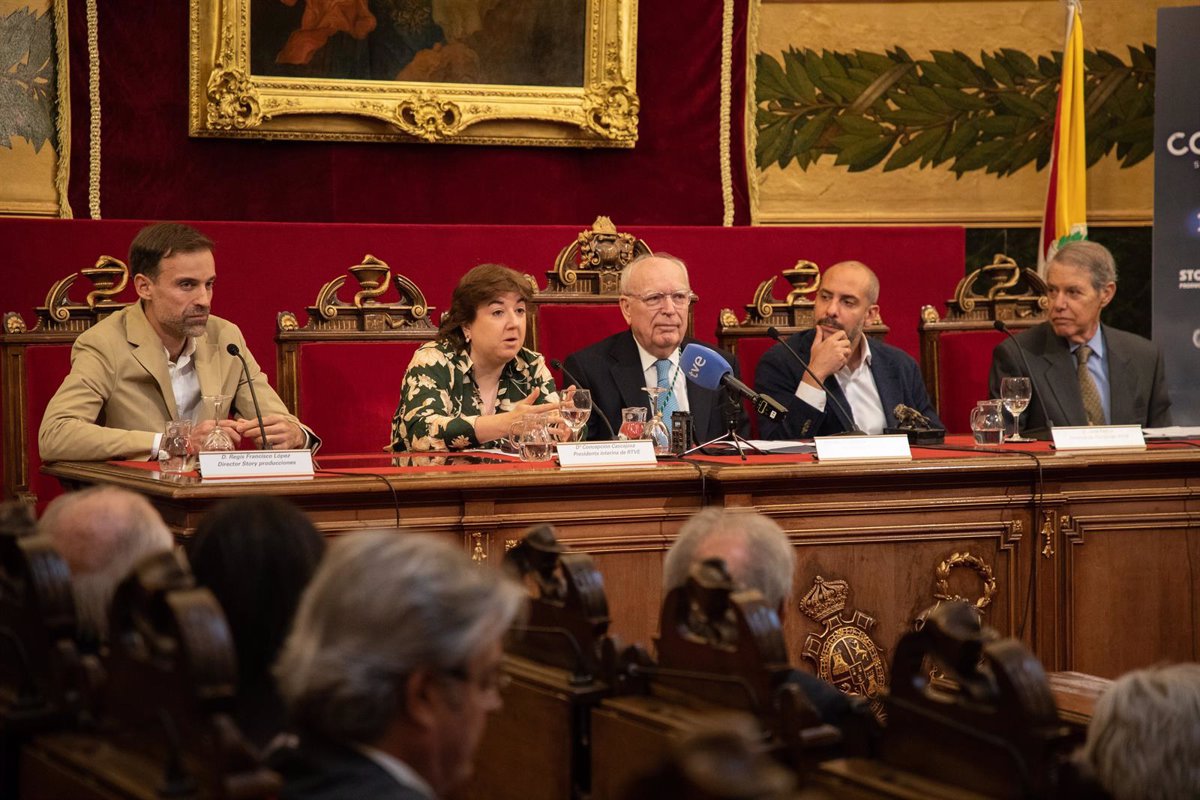Researchers from the University of Granada, led by Professor of Legal Medicine José Antonio Lorente, have confirmed, “definitively”, that the bones of the navigator Christopher Columbus buried in the Cathedral of Seville belong to the discoverer of America.
This was announced this Thursday by Lorente himself and the director of Communication and Participation of RTVE, María Eizaguirre, during the presentation of the documentary film ‘Colón ADN. Its true origin’, organized by RTVE and the Royal National Academy of Medicine of Spain.
“Reliability in that the DNA that has been obtained from such a bone really is this, which is what reliability is from the point of view of genetic analysis, is practically absolute reliability.in the sense that it has been replicated by different laboratories and will thus be published in an international scientific journal, which is what we scientists do when we have a result that we want to share,” stressed the person responsible for the research.
Asked about the complexity of the discovery, Lorente pointed out that The investigation has been “very complicated” because the researchers started from the basis that there was “two large groups of theories” about the origin of Christopher Columbus, theories that have been considered because “there are many more.”
“Some theories are what I called closed or specific theories, those that said that Columbus was the son of a certain person and belonged to a certain family. Therefore, “If you are able to compare that DNA and, from that DNA comparison, there is a similarity, then the mystery is solved.”he explained.
According to the scientist, there was another type of theory that he calls “open or universal, which are those that say ‘Columbus was born in a certain geographical area’, for example, in Genoa”. “The scientific approach to trying to obtain information in both cases is totally different. A large amount of genetic data has to be handled,” he indicated, later adding that “this has greatly complicated the research and that” all the data that have been done, they are usually done in parallel in different laboratories so that there is a coincidence”.
The event included Concepción Cascajosa, interim president of RTVE; Eduardo Díaz-Rubio, president of the Royal National Academy of Medicine; José Pastor, director of Film and Fiction at RTVE; Regis Francisco López, director of the film; Ainhoa del Castillo, producer; the Duke of Veragua, descendant of Christopher Columbus; and María Eizaguirre, director of Communication and Participation of RTVE.
TWO GREAT ENIGMS
The feature film documentsl ‘Columbus DNA. Its true origin answers two great enigmas about the figure of Christopher Columbus: what was his true origin and whether or not his mortal remains are in the Cathedral of Seville, something that has been revealed during the presentation.
Directed by Regis Francisco López, it is based on more than 20 years of scientific and “historical” research led by Dr. José Antonio Lorente of the University of Granada (UGR), “a documentary thriller that follows one of the most important historical investigations and exciting events of all time,” said Eizaguirre.
For his part, the president of the Royal National Academy of Medicine, Eduardo Díaz-Rubio, has thanked all the people and institutions that have made this documentary possible and have counted on the institution. “For us, today is truly a historic day,” he stressed.
“I think we use science to make a great event, a great television event that we hope will have a lot of representation later in other areas,” said the interim president of RTVE, Concepción Cascajosa, who has conveyed the “satisfaction” of the public Corporation for having been part of this “very special” project.
THE CHARACTER WHO HAS BEEN WRITTEN THE MOST ABOUT
For its part, Christopher Columbus de Carvajal, descendant of the discoverer of America, has highlighted that “Christopher Columbus is the character about whom the most has been written of all historical figures“, mainly, for “the significance of the Columbian discovery” in 1492.
In 2003, the professor of Legal and Forensic Medicine at the UGR, José Antonio Lorente, and the historian and professor Marcial Castro managed to exhume the bones of Christopher Columbus and his son Hernando from the Cathedral of Seville and those of his brother Diego (Giacomo ) of the Charterhouse of Seville. After more than 20 years of studies and hundreds of comparative DNA tests, this documentary film solves the enigma of the origin of Columbus and his burial place, the Cathedral of Seville.
More than 25 nations and regions in Europe have claimed to be the place of origin of Christopher Columbus: Italy, Sweden, Norway, Portugal, France, England, Scotland, Hungary, Ireland, Croatia, Galicia, Castile, Catalonia, Valencia, Navarra, Mallorca . There has also been talk that he could have been a Sephardic Jew and an Agote.
Of these 25 initial proposals, there have been eight finalist theories that provide DNA evidence for comparison. After the study and comparison of bone remains of historical figures from different countries and regions of Europe, the research has culminated with conclusive results that will be revealed exclusively in ‘Colón ADN. Its true origin’ this Saturday, October 12, at 10:35 p.m., on La 1 on TVE and RTVE Play.
